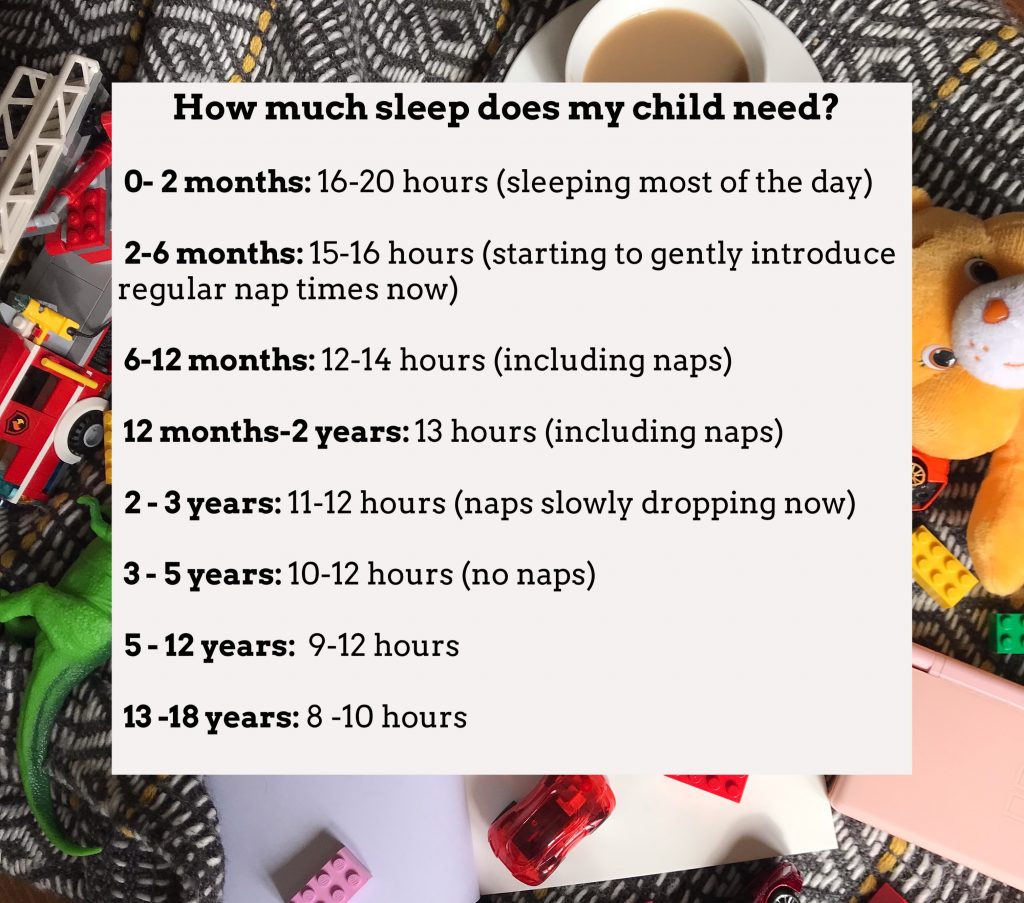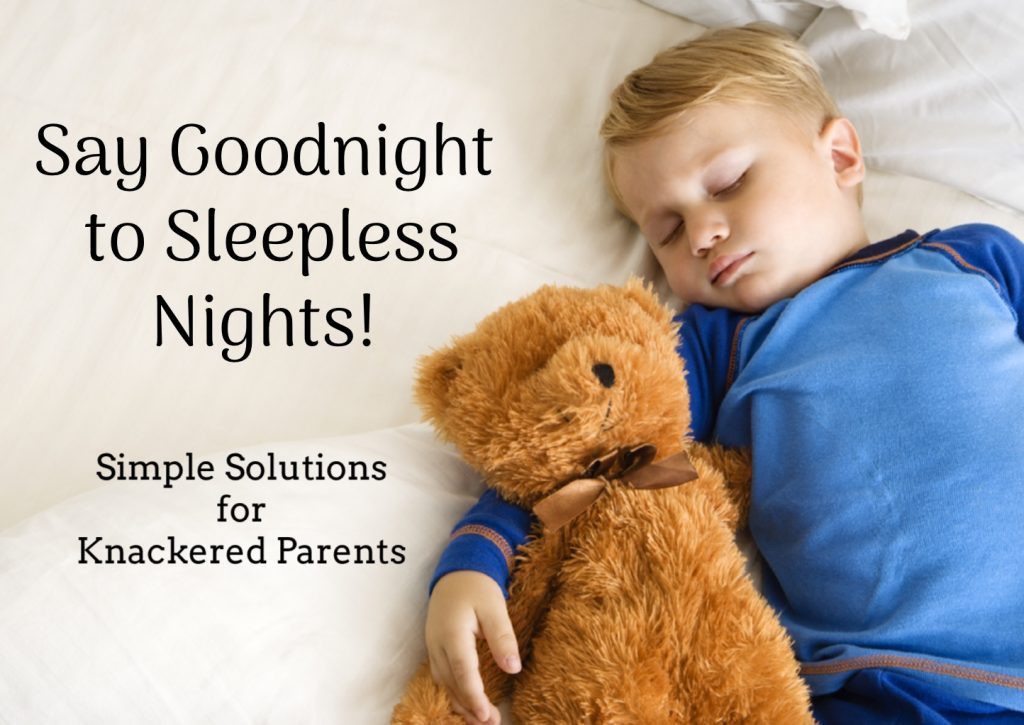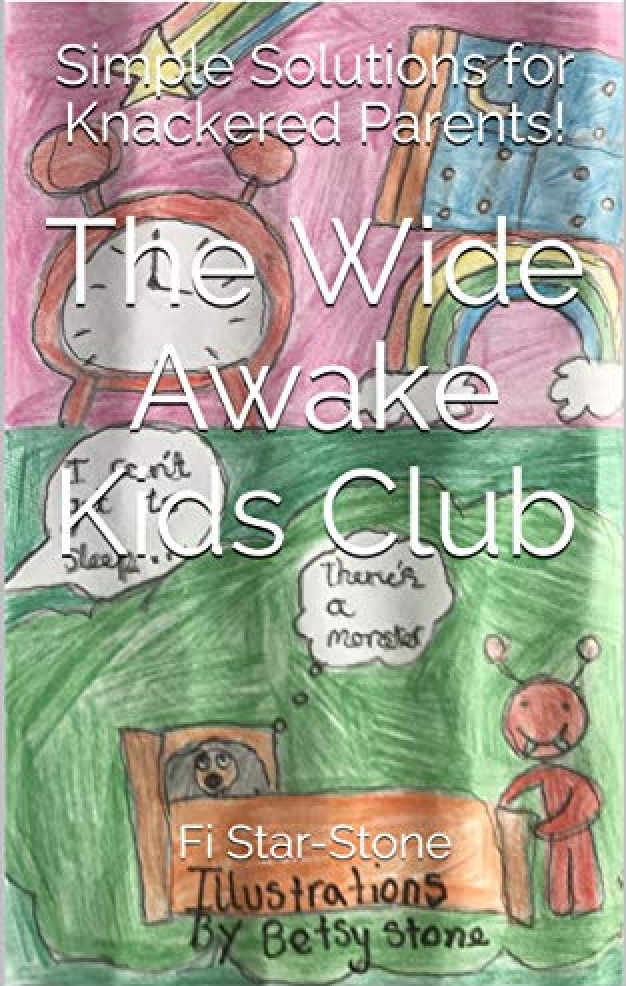‘My child won’t sleep!’
It’s a common problem that I get asked for help with, from hundreds of very tired and stressed parents every week, and a problem I’ve helped thousands of parents with over the years.
My gentle techniques have been helping families around the world for the past 25 years, including celebrities and high-profile clients. Many call me ‘magic’ or a ‘sleep fairy’ but actually, it is the parents that do all the work, I just give my qualified advice and tips to help them on their way to better sleep for the whole family.
‘How much sleep should my child be getting?’
In my books ’The Baby Bedtime Book – Say goodnight to Sleepless nights, and ’The wide Awake Kids Club – Simple solutions for Knackered Parents, I talk about sleep rather a lot. My books don’t just cover sleep techniques and tips, but also look into the benefits and importance of sleep.
One of the biggest questions I get asked is ‘How much sleep should my child be getting?’
Children of different ages require different amounts of sleep. A toddler has very different needs to a primary school child, so I thought I’d share this little chart for you to see how much (or how little) your child is getting compared to how much they actually need.
Remember – this is based on healthy children with no additional needs. It is just a guideline and all children are different.

In recent research for my latest book “The wide Awake Kids Club’ I discovered that a large amount of families were missing out, on average, fourteen hours of sleep a week. Add that up over a year and it equates to roughly 30 whole days.
Knowing that sleep is needed for growth, repair and development, and that a lack of sleep can cause lethargy, moodiness and health issues, it’s something to really think about isn’t it?
How to get a baby to sleep!
As with all things parenting, it’s about what works for you as a parent, what makes you feel happy and what makes your little one happy. My thought’s on parenting are very much ‘live and let live’ and about making an informed choice.
My site and my books are all about sharing qualified, professional advice together with 25 years experience of techniques that promote happy sleeping! More importantly – I’m a mum too – and I really feel that all of my combined qualifications and experiences help me to understand what you are going through! Sleep deprivation is no fun at all!
? Routine is the magic key! I say it a lot in my talks and on my TV and Radio interviews about sleep: Routine really is the magic key to a happy sleeper.
Of course in the very early days babies are just getting used to the big wide world, so don’t worry about routines right away. You’re likely to find that they’ll fall into their own little feeding routine, so focus on the cuddles and snuggles and resting yourself.
When I talk about routine I don’t mean regimented, say routine. I mean a regular feeding, nap-times, daily activities and bedtime. Even from a very young age your baby will thrive on routine such as a regular morning walk in their pram, regular feeding times, and regular nap and bedtimes.

Say goodnight to sleepless nights!
? Day time naps: Some parents think that if a baby doesn’t sleep during the day that they will be more tired at night and thus sleep longer and better. In-fact the total opposite happens!
Babies that don’t have regular naps during the day are grouchy, grumbly and overtired, and this over tiredness can cause forwent wake-ups in the night, and trouble settling at bedtime.
Getting your child into good sleep habits is beneficial not just for them – but for you too.
? A good bedtime routine: Getting into a good routine doesn’t end at bedtime, if anything, it starts at bedtime! It’s important to get into a good bedtime routine from a very early age- start as you mean to go on!
 Bedtime should start the minute you are upstairs getting your child ready to go to bed, but ideally you should have wind down at least 30 minutes before the bedtime routine begins. This means switching off the screen time too.
Bedtime should start the minute you are upstairs getting your child ready to go to bed, but ideally you should have wind down at least 30 minutes before the bedtime routine begins. This means switching off the screen time too.
Once upstairs – it’s a really nice calming approach to bedtime to start with a nice bath! Babies and toddlers will especially benefit from this.
Have lots of fun in the bath with toys, bubbles and singing time, even from a very young age this is important! Sing to your baby in the bath, trickle water over them and make fun sounds. The longer, more fun the bath, the better! You can even try using some lavender drops or bedtime bath bubbles to encourage relaxation.
? Preparation is key: Always prepare your older child that bath time is nearly over by giving a two minute warning. Sounds silly? Not at all – this is usually where lots of tantrums start and children who don’t have time to get used to the idea that something fun is about to end, can break-down into floods of tears which turns bedtime into a nightmare! If you’re skipping the bath – opt for a good face and hand wash, brush hair and teeth and get into PJ’s. This routine gets the brain thinking it’s bedtime mode.
? Bedroom calm time: In your little ones bedroom – snuggle together with a book (babies will usually have their bedtime milk/feed at this point but a story is a lovely habit to get into even from a very young age.) After the story get your child into bed, tuck them in and say goodnight.
? Older children: At the end of story time snuggle them down for sleep – and for older children, avoid entering into a conversation about another story/ I need a drink/ I need a wee/ I want to play with my toys and instead try my ‘One rubbish, three awesome’ technique. It’s a lovely way to end the day and you’ll often find out more about what they’ve been up to then, than at any other time of day!
My two in particular love their bedtime as they get half-hour of reading to themselves after we’ve said goodnight, but they also love their stalling tactics.
Gentle and happy bedtime techniques
 No need for tears: The cry-it-out (or timed-comfort as it’s often disguised) is offered as a magic, quick-fix solution to sleep. The method works quickly (it’s not new and certainly not unique) but it can be upsetting for parents, and very upsetting for your little one. I’m not a fan of the technique because I believe bedtime should be a happy place, somewhere your little one feels safe, happy and secure – not somewhere they scream or cry themselves to sleep. If you teach sleep to be a positive and happy thing – it’ll always be a happy and positive thing.
No need for tears: The cry-it-out (or timed-comfort as it’s often disguised) is offered as a magic, quick-fix solution to sleep. The method works quickly (it’s not new and certainly not unique) but it can be upsetting for parents, and very upsetting for your little one. I’m not a fan of the technique because I believe bedtime should be a happy place, somewhere your little one feels safe, happy and secure – not somewhere they scream or cry themselves to sleep. If you teach sleep to be a positive and happy thing – it’ll always be a happy and positive thing.
Babies don’t cry to manipulate – they cry to communicate! Don’t make bedtime a struggle by making it upsetting and sad. It may work for a little while – but you’ll find wake-ups will come back when they are older.
? My Shh-Shh-Pat technique is particularly popular for babies.
Pop your baby in their crib or cot and stand nearby. (If it’s an older child, do the same by their bed.) If they start to whimper, simply say Shh-Shh very gently. Don’t pick them up if they make a noise. It’s natural for them to make a sound as you put them down. They are not crying just stirring. Remember – it’s a new thing for them to be put into a cot awake – they are figuring it all out! You are right there next to them so don’t worry.
If they begin to cry, simply lean over and say Shh-Shh and at the same time gently pat their back. You can stroke if you prefer, but remember – you’re not doing this to get them to sleep, just to calm them into sleepy mode and to feel comforted and reassured.
Now move away from the cot and wait. If they stir but don’t cry, leave them. If they cry, repeat the shh-shh-pat-pat technique. Again – try not pick up. Just Shh-shh-pat. Having said this – if they are very upset – please comfort them. This is designed to be a gentle calming method.
Don’t use any words. It’s especially important with older babies not to enter into a conversation. Just ignore and repeat – Shh-shh-pat-pat.
Keep repeating until they are almost asleep. The important thing is to not pat them to sleep because then you are just replacing rocking/feeding to sleep with patting. Use this method if they wake in the night.
Don’t lift them unless they are distressed, wet, soiled, hungry or poorly. It’s important to listen to the sounds they make. Is it a whimper? Are they just making noises in their sleep? Will they settle? Help them to settle themselves gently, happily and calmly with no need tears and you’ll teach them to love their bedtimes.
? My gentle bedroom bottom shuffle technique
Don’t laugh! The bedroom bottom shuffle is what it is; bottom shuffling! This is one of the favourite techniques that I recommend among the parents who come to me for help. It’s a lovely, gentle way and, although it takes much longer to achieve a full night’s sleep, it works well. It works with babies in cots and older children in beds too – so it’s also one of my favourite techniques.
Many parents don’t like controlled crying techniques and that is fine. As I have always said as a professional and a mum – it is your baby; you know your baby and know what will work for them and you best.
If you want to try the technique as well, sit by your little one’s cot when they are unsettled and calmly say, ‘shh’ and hold their hand. You can also stroke their arm or head or pat them.
The idea of this is pretty much the same as the Shh-Shh-Pat-Pat technique, but you stay with your baby until they fall asleep. As before, you must try and avoid stroking them to sleep, but instead just ‘be there’ if you can.
The majority of parents who use this technique tell me their babies learn to self settle in less than 7 days. They weren’t stroked to sleep. They simply fell asleep knowing their parent were beside them. It’s all about reassurance and kindness.
As the days move on, you can move further and further away from the cot until you are near the door. Your baby will still be able to see you at this point. It is surprising, in my own experiences and those of others, how quickly this works.
Eventually you move outside the door still saying, ‘shh-shh’. You will find there is no need to stay in the room.
It’s a very long-winded self-settling technique but it works and it’s so much nicer than listening to your baby cry and scream.
Putting the effort in short-term will work in the long term in creating a self-settling, happy at bedtime baby.
There are many other sleep training techniques and advice that I offer to parents including dealing with nightmares and fears in the night, early risers, midnight bed invaders and frequent wakers of all ages. All these feature in books;
? The Baby Bedtime book – say goodnight to sleepless nights! You can ore order a copy from Amazon here or Waterstones here.
? The wide Awake kids Club – Simple solutions for Knackered Parents is available here.
My top tips to saying goodnight to sleepless nights!
? Are they too hot or cold? Check your childs sleeping area is comfortable, at the right temperature (not too hot or too cold) and that their room is a happy place to sleep.
? Are they comfortable? Ensure your child is in comfortable clothing – try a sleeping bag to avoid kicking off of blankets in the night – a common problem of waking! Socks! I see this repeated everywhere yet so many parents don’t realise that babies get very cold feet- this can wake them up! Pop some socks over their pyjamas!
? Are they hungry? – Ensure your baby child has had a good last meal/feed (older children good portion at tea and light snack and drink before bed, babies good milk feed/formula portion.)
? Routine is the magic key! A Good bedtime routine -Bath, Book, milk, bed and a good daily routine, really is the magic key to a god night’s sleep.
? Always comfort night terrors/poorly poppets – Night terrors come and go. It’s essential to always comfort a child who has had a bad dream or night terror, but to avoid getting them out of their bed or room. Simply reassure them, a nice cuddle then back to sleep. Avoid night terrors by avoiding Childrens scary books or TV programs before bed and look around the room for things that may trigger worries such as dressing gowns hanging on doors, open cupboards, (remember when you were little- the things that frightened you?) The same applies to littlies suffering with poorliness or teething. Don’t use any sleep training techniques and offer comfort always.
? Preparation is key! Make bedtime a nice time not a grumpy ‘I don’t want to go to bed’ time by always preparing little ones in advance that activities are coming to an end and the bedtime routine is starting.
I hope these tips help you, like thousands of other parents around the world, into gaining a happy sleeper and a happier night for all.










